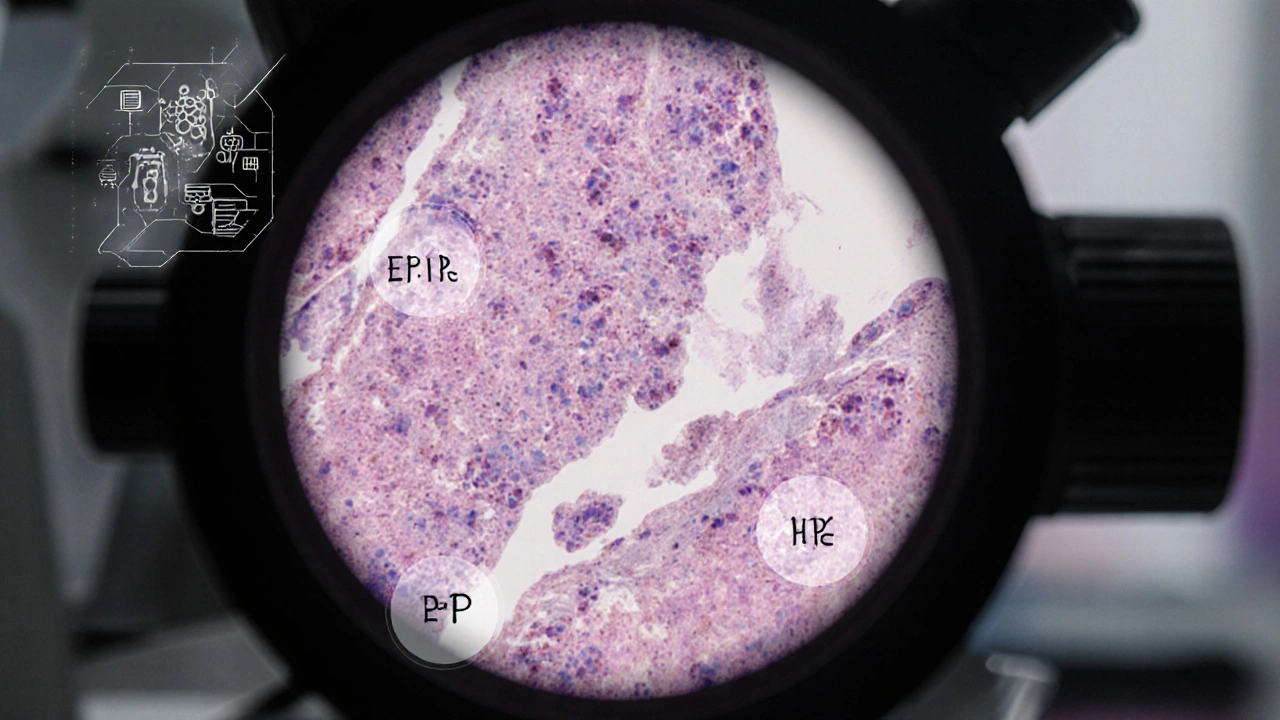Triple-Negative Breast Cancer Explained: Causes, Signs & Treatment Options
Learn what causes triple‑negative breast cancer, how to spot its symptoms, and the latest treatment options-from chemo to immunotherapy and PARP inhibitors.
Read moreWhen dealing with triple‑negative breast cancer, a subtype of breast cancer that does not express estrogen, progesterone, or HER2 receptors. Also known as TNBC, it tends to grow faster and affect younger women more often. Understanding its unique biology helps you choose the right tests and treatments.
One of the biggest challenges is that triple‑negative breast cancer lacks the three common hormone receptors, so hormone‑blocking drugs don’t work. This makes it a more aggressive disease that often requires a different therapeutic approach. Because it’s defined by what it doesn’t have, doctors focus on other tumor features to guide care.
Diagnosis starts with a standard mammogram or ultrasound, but the definitive answer comes from a biopsy. Pathologists look for the absence of ER, PR, and HER2 proteins under the microscope. Once confirmed, staging scans such as MRI or PET help map the tumor’s size and whether it has spread.
Risk factors go beyond age and family history. BRCA1 mutation, a genetic change that impairs DNA repair dramatically raises the chance of developing this cancer type. Studies show women with a BRCA1 alteration are up to five times more likely to get TNBC than those without the gene change.
Because hormone therapies are off the table, chemotherapy, the use of drugs that kill rapidly dividing cells remains the backbone of treatment. Regimens like anthracycline‑taxane combos are given before surgery (neoadjuvant) to shrink the tumor, and often continue after surgery (adjuvant) to lower recurrence risk.
In recent years, immunotherapy, treatments that boost the body’s immune response against cancer cells has entered the conversation. checkpoint inhibitors such as pembrolizumab have shown benefit when combined with chemotherapy, especially in tumors that express PD‑L1. This synergy is changing the outlook for many patients.
Targeted options are also emerging. PARP inhibitors, for example, exploit the DNA‑repair weakness in BRCA‑mutated tumors. Drugs like olaparib and talazoparib can be used after chemotherapy or as maintenance therapy, offering a more personalized attack on the cancer.
Survival rates improve when patients stay on top of follow‑up appointments, maintain a balanced diet, and stay active. Research links proper nutrition—adequate protein, electrolytes, and vitamins—to better recovery after surgery and chemo. Simple habits like regular walking or gentle strength work can keep stamina up during treatment.
Below you’ll find a curated mix of articles that touch on nutrition, medication comparisons, and lifestyle tips that complement cancer care. Whether you’re looking for deep dives on drug options, ways to manage side effects, or practical health advice, the collection is designed to give you clear, actionable information.
Ready to explore the full range of resources? Scroll down to see each article and find the guidance that matches your current needs.

Learn what causes triple‑negative breast cancer, how to spot its symptoms, and the latest treatment options-from chemo to immunotherapy and PARP inhibitors.
Read more